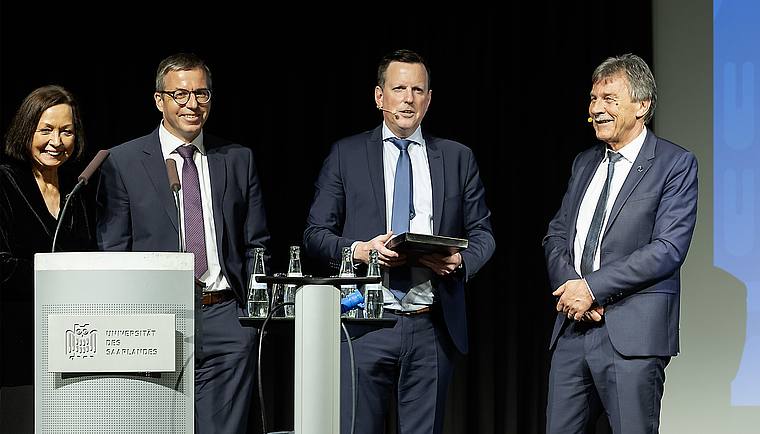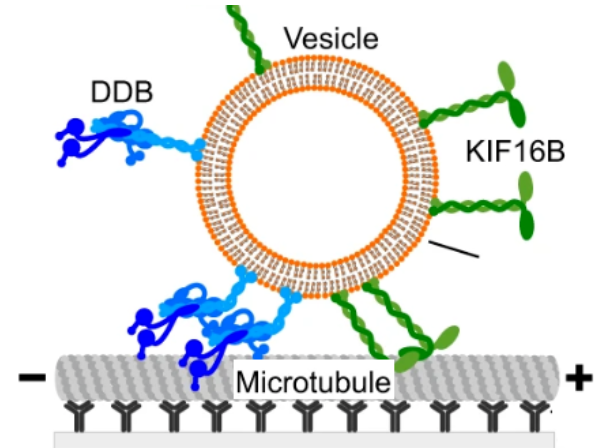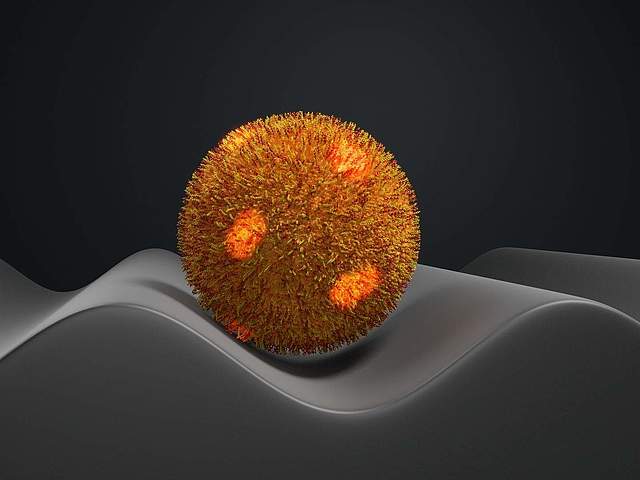News

Ludger Santen starting his presidency
Manfred Schmitt's term as president of Saarland University ends after 7 years. Ludger Santen, Professor for Theoretical Physics and director of the Center for Biophysics, will start his term on April 1, 2024.
Press release of Saarland University of March 26, 2024 (in German).

Ludger Santen elected as President of Saarland University
Ludger Santen, Professor forr Theoretical Physics (Saarland University) and director of the Center for Biophysics, has been elected to be become the President of Saarland University. His term will start on April 1, 2024.
"I would like to expand the topic of sustainability, which is already part of cross-faculty research issues. This includes research into new materials, energy storage and the circular economy, to name just a few examples," says Ludger Santen. Here, as with many other topics, he would like to see committed colleagues. "I want to encourage people at both university locations to show the courage to take the initiative and I want to support this to the best of my ability."
Press release of Saarland University from December 1, 2023 (in German).
Current lecture
- Theoretical Physics IV - Statistical Physics (Theoretische Physik IV – Statistische Physik)
Lecture times and locations: Th 14:00 – 16:00, Fr. 8:30 – 10:00, Building E 2 6 – Room E11 (0.11)
Start: 26.10.
HISLSF-No: 145417
Lecturer: Prof. Dr. Ludger Santen
Teams: To join TP IV channel on Microsoft Teams click here.
Further information (assignment sheets etc.)

Vesicles driven by dynein and kinesin exhibit directional reversals without regulators
Intracellular vesicular transport along cytoskeletal filaments ensures targeted cargo delivery. Such transport is rarely unidirectional but rather bidirectional, with frequent directional reversals owing to the simultaneous presence of opposite-polarity motors. So far, it has been unclear whether such complex motility pattern results from the sole mechanical interplay between opposite-polarity motors or requires regulators.
In our receent publication in Nature Communications, we - together with the group of Stefan Diez (TU Dresden) - demonstrate that a minimal system, comprising purified Dynein-Dynactin-BICD2 (DDB) and kinesin-3 (KIF16B) attached to large unilamellar vesicles, faithfully reproduces in vivo cargo motility, including runs, pauses, and reversals. Remarkably, opposing motors do not affect vesicle velocity during runs. Our computational model reveals that the engagement of a small number of motors is pivotal for transitioning between runs and pauses. Taken together, our results suggest that motors bound to vesicular cargo transiently engage in a tug-of-war during pauses. Subsequently, stochastic motor attachment and detachment events can lead to directional reversals without the need for regulators.
Publication:
Ashwin I. D’Souza, Rahul Grover, Gina A. Monzon, Ludger Santen & Stefan Diez: Vesicles driven by dynein and kinesin exhibit directional reversals without regulators. Nat. Commun. 14, 7532 (2023).10.1039/d3sm01045g.

Adhesiveness of Staphylococcus aureus cells is unevenly distributed across the cell surface
Staphylococcus aureus, a dreaded hospital germ, can cause serious infections. One remarkable characteristic of this bacterium is its extraordinary adhesive ability. A team from the Physics and Medicine departments at Saarland University has now discovered that the germ adheres better to some parts of the envelope than to others. Their study, which has now been published, could be the starting point for more effective bacteria-repellent surfaces.
Press release of Saarland University of 17.10.2023 (in German)
Publication:
C. Spengler, E. Maikranz, B. Glatz, M.A. Klatt, H. Heintz, M. Bischoff, L. Santen, A. Fery and K. Jacobs: “The adhesion capability of Staphylococcus aureus cells is heterogeneously distributed over the cell envelope”, Soft Matter, 2023, DOI: 10.1039/d3sm01045g.
